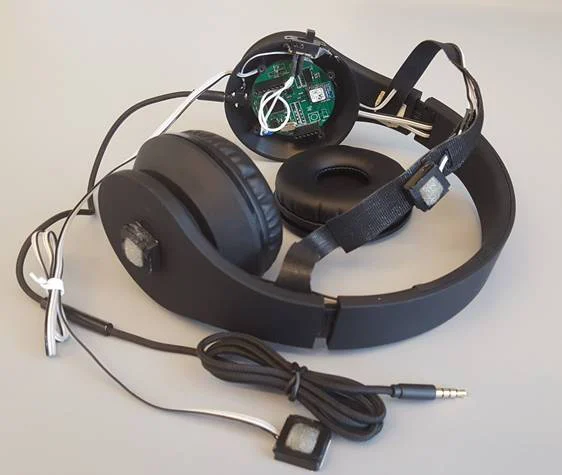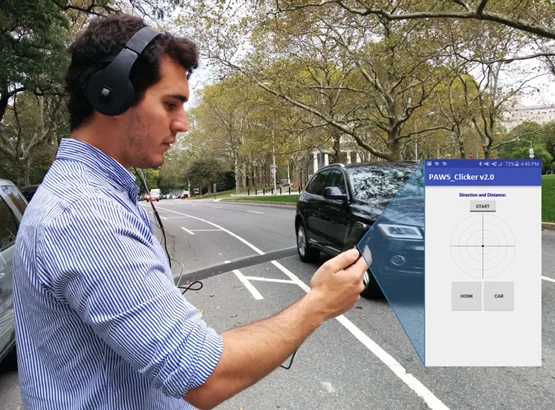As it turns out, my biggest pet peeve has a name. “Twalking.” The word refers to that unfortunate and increasingly common combination of a pedestrian walking while texting, with their attention focused on the phone in front of them rather than on the world around them. Add a pair of noise-canceling headphones, which have a UX specifically designed to reduce ambient noise, and a person can become completely unaware of their immediate surroundings. Sure, it makes for easy listening, but there are side effects that we all have to deal with: cluelessness in the public domain. Hey, I’m walking here!
Reduced awareness of one’s surroundings is also dangerous, because when headphones like the new Beats Solo Pro “actively block external noise,” they also prevent the user from noticing the auditory clues of imminent danger, like the sound of an approaching car. Noise-canceling headphones do seem like they’d hinder one of the National Highway Traffic Safety Administration’s (NHTSA) “walking safety tips“—that pedestrians avoid distraction caused by “electronic devices that take your eyes (and ears) off the road.”

According to NHSTA, there were 6,283 pedestrians killed in traffic deaths last year—the most since 1990—and Columbia University’s Data Science Institute attributes the increased death rate, in part, to twalking. So how can society adjust to a personal listening experience that’s becoming both increasingly mobile and insular? The researchers at the institute have designed a prototype they hope will bridge the divide: an “intelligent headphone system” that alerts users to the hazards around them.
Sure, the prototype doesn’t have the looks of Beats by Dre, but, with a $1.2 million grant from the National Science Foundation in 2017, it’s no ordinary set of headphones. A tech Russian nesting doll of sorts, the device embeds multiple mini microphones within the headset and has a low-power data processor that analyzes nearby sounds for cues that indicate danger (like a car horn) without using a lot of battery power. Machine-learning models on the user’s smartphone will then identify auditory cues and warn the user when they are in danger so they can respond.
The design is currently being tested and refined in the lab and on the streets of New York City, one of the most crowded and, dare I say, outspoken cities on the planet. Fingers crossed for those intelligent headphone guinea pigs. Fred Jiang, an assistant professor in Columbia’s department of electrical and engineering and the lead investigator on the project, tells me the team is now focusing on creating a more adaptive safety platform that can be applied in other ways, such as in construction, cyclist, and police safety.
“The pedestrian safety headset that we have developed is in some sense a special case for a more general system—selective audio filtering,” says Jiang via email. In pedestrian safety, the alert system is triggered by the sound of vehicles, while filtering out other ambient urban noises. The real-time response requirements have to be sped up for bikes, which move at a much faster pace. And construction has a different audio data set, requiring the system to recognize and filter out loud construction tools like jackhammers instead.
“This is a challenging problem,” says Jiang, “because we are not simply filtering out a sound frequency range (which is what active noise-canceling headsets do), we want to filter out a particular type of sound that we have prior knowledge of.” Pending any roadblocks, they aim to commercialize the technology and make it available to twalkers everywhere by 2021.

But are smart headphones just a band-aid solution? Why not work on changing pedestrian behaviors to encourage alertness, or focus on engineering ways to make streets safer? (All of which will be especially important in the not-so-distant future of autonomous cars.) “I think we should tackle all these approaches at the same time,” says Jiang. And he says that the Data Science Institute is working on technology that will make streets safer, too, by installing sensors and “edge computing resources” on light poles that track moving objects in real time and send that information to pedestrians and other vehicles.
Jiang considers the lab’s headset-based approach as an augmentation of senses that are otherwise distracted or blocked, but the technology isn’t meant to replace common sense: “Pedestrians should still pay attention to the road.” It probably won’t stop twalkers from being a public nuisance to city speed walkers, either.
Recognize your brand’s excellence by applying to this year’s Brands That Matter Awards before the early-rate deadline, May 3.